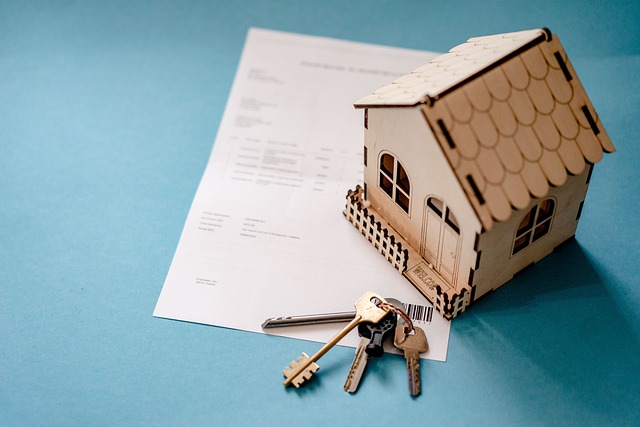In Phoenix, where dynamic real estate and diverse climates pose unique risks, property vacancy insurance paired with earthquake coverage is crucial for homeowners and investors. The cost of earthquake insurance in Phoenix varies based on factors like location, building age, construction type, and structural integrity, impacting vacancy insurance quotes. Mitigation strategies include structural reinforcements, code compliance, regular maintenance, diversified portfolios, aligned coverage, and comprehensive property management. Understanding the cost of earthquake insurance in Phoenix is key to proactive risk management and financial stability.
In the vibrant, yet seismically active city of Phoenix, managing property vacancy risks is paramount. This article explores the critical aspect of property vacancy insurance, its significance, and the associated costs—particularly in light of earthquakes. We delve into assessing risk factors that influence the price of earthquake insurance in Phoenix, providing insights to help homeowners navigate this essential coverage. Additionally, it offers mitigation strategies to reduce vacancy insurance risks in earthquake-prone areas, ensuring peace of mind for residents.
- Understanding Property Vacancy Insurance and its Significance in Phoenix
- Assessing the Risk: Factors Influencing Earthquake Insurance Costs
- Mitigation Strategies for Reducing Vacancy Insurance Risks in Earthquake-Prone Areas
Understanding Property Vacancy Insurance and its Significance in Phoenix

In Phoenix, understanding property vacancy insurance is paramount for homeowners and investors alike. This specialized coverage protects against financial losses incurred during periods when a property is unoccupied, addressing key risks such as damage or theft. With a vibrant real estate market and diverse climate patterns, including the potential for earthquakes, the cost of earthquake insurance in Phoenix becomes an integral part of any risk management strategy.
The significance of vacancy insurance lies in its ability to mitigate financial exposure during periods of property unoccupancy. In a city like Phoenix, where seasonal fluctuations and unforeseen events can lead to vacant properties, this coverage ensures peace of mind and financial stability. By understanding and utilizing vacancy insurance alongside earthquake insurance, homeowners and investors can better navigate the unique risks presented by the local landscape and climate.
Assessing the Risk: Factors Influencing Earthquake Insurance Costs

When assessing the risk for property vacancy insurance, particularly in areas prone to earthquakes like Phoenix, several factors significantly influence the cost of earthquake insurance. The geographic location plays a pivotal role; properties closer to active fault lines or in zones with higher seismic activity will generally face higher insurance costs. This is due to the increased likelihood and potential severity of earthquakes in these areas.
Building age, construction type, and structural integrity are other crucial factors. Older buildings, especially those constructed with less resilient materials or without modern earthquake-resistant features, are more at risk and will typically require more comprehensive insurance coverage, driving up costs. Understanding these variables is essential for property owners in Phoenix to get accurate quotes and make informed decisions regarding their earthquake insurance needs.
Mitigation Strategies for Reducing Vacancy Insurance Risks in Earthquake-Prone Areas

In earthquake-prone areas like Phoenix, where seismic activities pose significant risks to properties, implementing robust mitigation strategies is essential to reduce vacancy insurance risks. Homeowners and property managers can take several proactive steps to minimize potential losses. One effective approach is installing structural reinforcements such as steel braces and seismic retrofits, which significantly enhance the resilience of buildings against ground motion during an earthquake. Additionally, ensuring that all structures meet or exceed local building codes for seismic safety is paramount. Regular maintenance and inspections are crucial in identifying and addressing vulnerabilities promptly.
Moreover, diversifying investment portfolios by including properties with established earthquake-resistant features can lower overall risk. Policyholders should review their earthquake insurance coverage to ensure it aligns with the cost of reconstruction and replacement values in Phoenix. Adjusting policies to reflect the region’s seismic risks is a prudent step. Additionally, implementing a robust property management strategy that includes regular tenant communication about safety procedures and emergency preparedness plans contributes to a more resilient and less vulnerable portfolio.
Property vacancy insurance is a vital tool for homeowners and investors in earthquake-prone areas like Phoenix, aiming to mitigate financial risks associated with prolonged property vacancies. By understanding the factors influencing earthquake insurance costs, such as location, building age, and construction type, individuals can proactively manage their exposure. Implementing effective mitigation strategies, including retrofitting and maintaining comprehensive insurance policies, ensures that the cost of earthquake insurance in Phoenix becomes a manageable aspect of property ownership, safeguarding both financial assets and peace of mind.
